Try typing out a mentor text to get a closer look.![]()
Viewing: Blog Posts Tagged with: melissa stewart, Most Recent at Top [Help]
Results 1 - 25 of 35
Blog: TWO WRITING TEACHERS (Login to Add to MyJacketFlap)
JacketFlap tags: Lois Lowry, mentor texts, writing workshop, Melissa Stewart, mentor author, Dan Santat, Beekle, Add a tag
Blog: TWO WRITING TEACHERS (Login to Add to MyJacketFlap)
JacketFlap tags: authors, nonfiction, organization, research, non-narrative writing, Melissa Stewart, Author Spotlight Series, Add a tag
Melissa Stewart, award-winning author of more than 150 nonfiction books for children, steps into our Author's Spotlight today. In her post, she shares about the chunk and check process, which will help your students conduct research. ![]()
Blog: Miss Marple's Musings (Login to Add to MyJacketFlap)
JacketFlap tags: picture books, birds, nonfiction, feathers, Melissa Stewart, teacher resources, Perfect Picture Book Friday, FEATHERS NOT JUST FOR FLYING, Sarah S. Brannon, Add a tag
Title: Feathers Not Just for Flying Written by Melissa Stewart Illustrated by Sarah S. Brannen Published by Charlesbridge, 2014 Ages: 6 through adult Themes: feathers, birds, First lines: Birds and feathers go together, like trees and leaves, like stars and the sky. All … Continue reading
Add a CommentBlog: The Children's Book Review (Login to Add to MyJacketFlap)
JacketFlap tags: Environment & Ecology, Books About Plants, Books About Seeds, Cindy Jenson-Elliott, John Hutton, Ages 0-3, Ages 4-8, Picture Books, Book Lists, Current Affairs, Gardening, featured, Board Books, Water, Melissa Stewart, Earth Day, Picture Books For Children, Lorena Siminovich, Add a tag
I just love that Earth Day is in spring! It makes perfect sense to capture everyone's attention when they are ready to get back into the great outdoors after winter. Below you'll discover just a couple of the books that have caught my attention because of their appreciation of gardens, plants, and even weeds.
Add a CommentBlog: I.N.K.: Interesting Non fiction for Kids (Login to Add to MyJacketFlap)
JacketFlap tags: 2014 titles, Susan E. Goodman, Melissa Stewart, Common Core State Standards, Susan Goodman, 2013 titles, Add a tag
Blog: Kid Lit Reviews (Login to Add to MyJacketFlap)
JacketFlap tags: environments, habitats, 5stars, Library Donated Books, blasting heat, Constance R. Bergum, relief from the sun and the heat, the burning sun, NonFiction, nature, Series, children's book reviews, Melissa Stewart, Peachtree Publishers, Add a tag
 .
.
by Melissa Stewart & Constance R. Bergum, illustrator
Peachtree Publishers 4/1/2014
978-1-56145-733-5
Age 4 to 8 32 pages
.
“When the sun is scorching, you put on sunscreen and run under the sprinkler to stay cool. But how do wild animals survive in the heat? Journey from your neighborhood to a field where an earthworm loops its long body into a ball underground, to a desert where a jackrabbit loses heat through its oversized ears, to a wetland where a siren salamander burrows into the mud, and to a seashore where sea stars hide in the shade of a seaweed mat—and learn of the many ways animals carry on in spite the sun’s sizzling rays.”
Opening
“On the hottest days of the year, the sun rises early. Its bright light shines down on us, hour after hour.”
Review
Beneath the Sun explains what some of the earth’s creatures do to beat the heat when temperatures rise to unbearable levels. We humans, we get wet. Children enjoy sprinklers, swimming pools, and fire hydrants as three ways to keep cool in the heat of summer day. We also can use sunscreen to avoid burns and air conditioners to keep cool indoors.
Animals are not so lucky. They need to rely on instinctive measures and Mother Nature to survive the blast of the sun’s rays. Divided into four ecosysems, the book gives examples of animals defeating the sun’s effects in a field, on a seashore, in a wetland, and in the desert. For example, in a field, the woodchuck takes advantage of the cooler morning to munch on grass and then beats the heat of the open field’s sunrays by staying in a cool underground cave during the worst of the day’s hot weather. In the wetlands live the osprey. The male osprey stays cool by soaking his feathers in water, and then upon returning to his nest, his children soak the water from his feathers.

The herring gull, who lives on a seashore, fans its wings to protects its young from the sun and then pants like a dog to keep itself cool. Kids will love reading that, as they will the turkey vulture who must protects itself from the treacherous desert sun and harsh heat. It accomplishes this by spraying urine on its legs. The author is good at presenting—in two or three sentences—these odd heat beaters kids will enjoy learning.
The illustrations are realistic, as one would expect in a nature book such as Beneath the Sun. The images take children to each ecosystem with enough detail to be able to turn a page and know where the featured animal lives. The illustrations also frame the animals inside one complete day. Bergum did this by her watercolor end pages. The front depicts the sun rising and the back depicts the cooler end of the day. Returning to children at the end of their day completes a circle of time even the youngest can understand.
Beginning each book with the things children do when it gets too hot and sunny to play outdoors, framing the entire animal kingdom so kids can relate to the other species. The same holds true in When Rain Falls (2008) and Under the Snow
(2009),the two former editions of a series comparing children’s activities to those of other species. Similar to At the Same Moment, Around the World (Perrin, Clotilde, 2014), the different environments simultaneously occur during the span of one day, an easy concept children can grasp from this well-written picture book.
.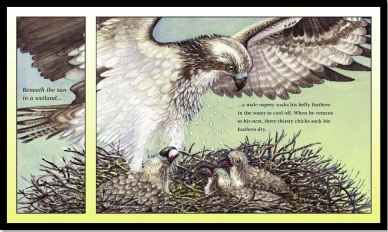
BENEATH THE SUN. Text copyright © 2014 by Melissa Stewart. Illustrations © 2014 by Constance R. Bergum. Reproduce by permission of the publisher, Peachtree Publishers, Atlanta, GA.
Learn more about Beneath the Sun HERE.
Purchase Beneath the Sun at Amazon—B&N—Peachtree Publishers—your local bookstore.
.
Meet the author, Melissa Stewart, at her website: http://www.melissa-stewart.com/
Meet the illustrator, Constance R. Bergum, at her jacketflap: http://www.jacketflap.com/constance-rummel-bergum/30188
Find other wonderful books at the Peachtree Publishers website: http://peachtree-online.com/
.
Also by Melissa Stewart & Constance R. Bergum
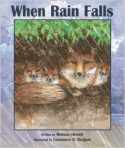
When Rain Falls
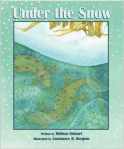
Under the Snow
.
.
.
.
.
.
New at Peachtree Publishers
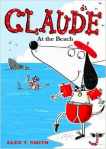
Claude at the Beach
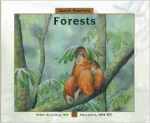
About Habitats: Forests
.
.
.
.
.
.

.
Peachtree Publishers Book Blog Tour
Beneath the Sun
Monday 4/14
Tuesday 4/15
Wednesday 4/16
Thursday 4/17
Friday 4/18
.
Today is NATIONAL BOOKMOBILE DAY!
Support your local Bookmobile.

Filed under: 5stars, Library Donated Books, NonFiction, Series Tagged: blasting heat, children's book reviews, Constance R. Bergum, environments, habitats, Melissa Stewart, nature, Peachtree Publishers, relief from the sun and the heat, the burning sun
Blog: I.N.K.: Interesting Non fiction for Kids (Login to Add to MyJacketFlap)
JacketFlap tags: Melissa Stewart, illustration, Add a tag
Today I’m giving my slot to Sarah S. Brannen, the uber-talented illustrator of Feathers: Not Just for Flying.
Birds and feathers go together, like trees and leaves, like stars and the sky.”
It had me at hello. I read the first sentence of the manuscript that would become Feathers: Not Just for Flying, and I wanted to illustrate it more than any book that had come my way before. I love drawing natural things like rocks, moss, bones, or feathers, but I hadn’t yet had the opportunity to illustrate the things I do best in a children’s book.
Several years went by before I was able to start; Melissa had to finish the book and get a contract for it, and the publisher, Charlesbridge, had to find me—I was eagerly waiting to be found—and spend some more time finalizing details. At last, in the fall of 2011, it was time to start sketching.
Although I had been wanting to illustrate this book for years, once I read the manuscript over a few times, I realized that it was going to be an unusual challenge. Each bird discussed had two separate pieces of text, which had to be presented separately. I was convinced that I couldn’t illustrate a book about feathers without drawing actual feathers, but because of the text, it was clear that each illustration would also need to show the bird doing the action described.
And I wanted to add another set of illustrations. The similes in the book compare feathers to blankets, cushions, matador capes, fishing sinkers, etc.; I felt that it would be necessary to illustrate some of the things a young child might not be familiar with, like a matador.
I did a lot of research to find images of birds doing the things discussed in the text. I had been picking up feathers for over three years, hoping against hope that I would someday illustrate this book. I had to spend a lot of time identifying them, and figure out how to get feathers from some of the more unusual birds. A rosy-faced lovebird owner in Iceland sent me some feathers from her pet. A scientist in New York and a nature photographer in Australia sent me high-resolution photos of the club-winged manakin and the sandgrouse, respectively. The red-tailed hawk was easy… I was mowing the lawn one day and found a wing feather in the grass next to my house.
After all the research, the art went quickly and it was a delight. I loved drawing the feathers.
Along the way, someone mentioned to me that it was illegal to possess wild bird feathers. I didn’t believe them. But I told Melissa, and we looked into it, and discovered that under the terms of the 1918 Migratory Bird Treaty, it is illegal to possess feathers from a long list of native American birds. (It is legal to possess feathers of non-native species like peacocks, lovebirds, and mute swans; domestic fowl like turkeys are also okay).
I learned to draw feathers where I found them, and I’ve actually done a series of drawings of feathers on rocks, or sand, which turned out to add an interesting layer to the art.
However, the whole idea of the book was to encourage children to make a scrapbook of natural things, to study and learn. Obviously we couldn’t recommend that children engage in an illegal activity! The publisher talked to the Department of Fish and Wildlife and was told that although enforcing this aspect of the act was not a high priority, that it is illegal to possess the feathers of any bird on the list.
It may sound absurd, but when the law was enacted, many species were threatened by the fashion of wearing bird wings and feathers in hats, and egg collecting was very popular. Although picking up a feather a bird has dropped doesn’t harm the bird, there is no way to prove where you got a feather once it’s in your possession. So it does make sense, once you think about it.
Ultimately, it was decided to remove the tape which showed the feathers being mounted in the book. The scrapbook look remains, and the illustrations of the feathers accompany the illustrations rather than being intrinsically part of them. We had a slight story idea that was cut—there had been an illustration of a child holding the scrapbook on the original title page, and it was dropped.
It was a long, labor-intensive, complicated process, and the book was published over five years after I first saw the manuscript and fell in love with it. I’m very proud of how it turned out, and I can’t wait to share it with the world.
Blog: I.N.K.: Interesting Non fiction for Kids (Login to Add to MyJacketFlap)
JacketFlap tags: Melissa Stewart, Candace Fleming, Deborah Heiligman, Heather Montgomery, Tanya Lee Stone, Add a tag
 CandaceFleming, author of Amelia Lost, and many other great books calls it the “vital idea.”
CandaceFleming, author of Amelia Lost, and many other great books calls it the “vital idea.”  Tanya Lee Stone wrote Sandy’s Circusbecause, as a child, Alexander Calder, was the only artist she immediately understood in a way that her father and sister seemed to understand all artists. Calder was her link to a secret knowledge that made her feel more closely connected to her family.
Tanya Lee Stone wrote Sandy’s Circusbecause, as a child, Alexander Calder, was the only artist she immediately understood in a way that her father and sister seemed to understand all artists. Calder was her link to a secret knowledge that made her feel more closely connected to her family. DeborahHeiligman’s “nonfiction novel” Charles & Emma is so compelling because everything about who she is as a person drove her to write a book “in service to the love story” between Darwin and his wife. It's a book that only she could write.
DeborahHeiligman’s “nonfiction novel” Charles & Emma is so compelling because everything about who she is as a person drove her to write a book “in service to the love story” between Darwin and his wife. It's a book that only she could write. Next year, I have a book coming out that traces back to the walks my father, brother, and I took through the woods near our home when I was young. The knowledge my brother and I learned on those meandering journeys and the closeness it made us feel to my father had a strong impact on both our lives. In many ways, I’ve been writing No Monkeys, No Chocolate since I was 8 years old.
Next year, I have a book coming out that traces back to the walks my father, brother, and I took through the woods near our home when I was young. The knowledge my brother and I learned on those meandering journeys and the closeness it made us feel to my father had a strong impact on both our lives. In many ways, I’ve been writing No Monkeys, No Chocolate since I was 8 years old.--Was there an aha moment filled with joy that the author can't wait to share?
Blog: I.N.K.: Interesting Non fiction for Kids (Login to Add to MyJacketFlap)
JacketFlap tags: writing, Melissa Stewart, Add a tag
For the last few days, I’ve been working on a video to accompany a book coming out next spring. Why am I filming a whole year in advance? Because I need to get footage of wild roses in bloom, and that only happens one a year—now.
Blog: I.N.K.: Interesting Non fiction for Kids (Login to Add to MyJacketFlap)
JacketFlap tags: Susan E. Goodman, April Pulley Sayre, David Schwartz, Steve Jenkins, Melissa Stewart, Barbara Kerley, Add a tag
In recent years, we’ve heard a lot about narrative nonfiction—books that uses scene building, dialog, and other elements borrowed from fiction to tell true stories. But narrative texts are just the tip of the iceberg when it comes to creative nonfiction for young readers.
Here are some examples:
Blog: I.N.K.: Interesting Non fiction for Kids (Login to Add to MyJacketFlap)
JacketFlap tags: Melissa Stewart, Susan Goodman, Tanya Lee Stone, Jim Murphy, Kelly Fineman, Add a tag
Tanya Lee Stone. Susan Goodman. Jim Murphy. Kelly Fineman. You know these folks. They’re regular contributors to this blog.
They’re also four of the thirty or so authors featured in Real Revision by award-winning children’s book author Kate Messner. The book is such a gem that you’ll definitely want your very own copy.
Real Revision is published by Stenhouse Publisher, which caters to educators, so this book is written specifically for teachers. That makes it great for all you educators out there. But I know plenty of writers also read this blog. This book is a MUST READ for you, too.
Some chapters focus on fiction-specific revision strategies, but the lion share of the book is useful to nonfiction writers as well. Here are few of my favorite quotations from nonfiction writers.
Kelly Fineman on why she takes time away from a manuscript between writing the rough draft and delving into the revisions:
“It could be as little as half an hour or as long as a year, but I need to have established some sort of distance from it in order to read it at least somewhat objectively and not like a doting author.”
Loree Griffin Burns on the importance of reading widely and carefully considering the structure of nonfiction writing:
“I pay close attention to the structure of the books I am reading all the time, and I compare and contrast them to the structure I’m working with. This is always helpful to me because it gives me confidence . . .or in some cases, helps me see why my own structure is not working.”
Susan Goodman on striking the right balance between sharing information and engaging readers while writing Life on the Ice:
“. . . I was trying to fit in so many facts that I had lost sight of what my book was all about—the excitement on exploration . . . So I sat down at my computer with an imaginary nine-year-old kid beside me. And I simply told that kid an adventure story—one where scientists were the explorers.”
Jim Murphy on finding the proper voice and storytelling technique for his Newbery Honor book The Great Fire.
“I read newspapers and personal recollections of the Chicago fire until I had absorbed the pace and language of the era. . . . I didn’t try to duplicate voices from the past, but I knew I had a faint echo of them in my style.”
Tanya
Blog: I.N.K.: Interesting Non fiction for Kids (Login to Add to MyJacketFlap)
JacketFlap tags: Steve Jenkins, Melissa Stewart, Dorothy Hinshaw Patent, Add a tag
I’ve been thinking a lot about habitats lately. One of my favorite hiking spots features two very different habitats—a woodland and a pond—and each one has provided a special experience that eventually led to a book.
So today I’m going to share a video about that very special place and a list of some of my favorite children’s book about habitats.
I See a Kookaburra: Discovering Animal Habitats Around the World—Steve Jenkins and Robin Page
 Like all of Jenkins’s books, this one offers a combination of glorious cut paper collages and clear, concise text. It also has a fun, interactive game-like quality that invites participation. I See a Kookaburra introduces children to six of the world’s habitats and some of the animals that live in them. As an added challenge, and to make the point that ants live all over the world, one of these insects is hidden in each scene. Rich backmatter with maps rounds out the presentation. School Library Journal calls the book “A first-rate foray into ecology that will encourage readers to explore the world around them,” and I couldn’t agree more.
Like all of Jenkins’s books, this one offers a combination of glorious cut paper collages and clear, concise text. It also has a fun, interactive game-like quality that invites participation. I See a Kookaburra introduces children to six of the world’s habitats and some of the animals that live in them. As an added challenge, and to make the point that ants live all over the world, one of these insects is hidden in each scene. Rich backmatter with maps rounds out the presentation. School Library Journal calls the book “A first-rate foray into ecology that will encourage readers to explore the world around them,” and I couldn’t agree more.One Small Place in a Tree—Barbara Brenner
Some habitats are huge—a savanna, a forest, an ocean, but this book celebrates the wonders of a hidden microhabitat—a hole in a tree. As a bear sharpens her claws on a tree trunk, she unknowingly begins a chain of natural events that, over time, form a tree hole home for a menagerie of forest creatures, from salamanders and tree frogs to a family of white-footed mice. Lyrical prose and highly detailed, realistic illustrations bring the world beneath the bark to life for young readers.
The Salamander Room—Anne Mazer (illus Steve Johnson and Lou Fancher)
The Salamander Room is a gentle tale with an important message. A boy finds a salamander in the woods and asks his mom if he can keep it. Instead of saying “no,” she asks him questions that encourage him to think about what the salamander needs to survi
Blog: I.N.K.: Interesting Non fiction for Kids (Login to Add to MyJacketFlap)
JacketFlap tags: Jan Greenberg, April Pulley Sayre, Steve Jenkins, Lita Judge, Melissa Stewart, Robin Page, Dorothy Hinshaw Patent, Sandra Jordan, Sneed Collard, Dianna Aston, Add a tag
Ever since desktop publishing software became available in the early 1990s, the visual appeal of nonfiction books for young readers has grown by leaps and bounds. These programs make it easy to experiment with a book’s layout.
One of the true masters of nonfiction book design is Steve Jenkins, who often works with his wife Robin Page. Books like How Many Ways Can You Catch a Fly?, Never Smile at a Monkey, What Do You Do with a Tail Like This, and Move! are all about animal adaptations. The fun, innovative design of these books couple with the brief, clear text is irresistible. Jenkins does a remarkable job of selecting animals with unique adaptations and organizing them into clever categories to create books with a game-like feel.
A current trend in science-themed titles for the picture book crowd is layered text. Books like Beaks by Sneed B. Collard III, When the Wolves Returned: Restoring Nature’s Balance in Yellowstone by Dorothy Hinshaw Patent, Meet the Howlers by April Pulley Sayre, and my own book A Place for Butterflies feature two kinds of text that serve different purposes and that is distinguished visually by size and font.
For the most part, a larger, simpler text provides general information and can stand on its own. The smaller text presented in sidebars provides additional details to round out the presentation. These books are perfect for the Reading Buddy programs popular
Blog: I.N.K.: Interesting Non fiction for Kids (Login to Add to MyJacketFlap)
JacketFlap tags: creativity, poetry, imagination, nonfiction, Susan E. Goodman, Melissa Stewart, finding the truth, Add a tag
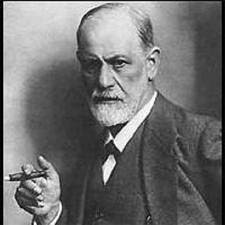 This past Saturday, I attended a seminar at the Boston Psychoanalytic Society and Institute called Three Poets on “Creative Writers and Day-Dreaming.” It was a blockbuster lineup: Poets Gail Mazur, Robert Pinsky and Louise Gluck (two of them Laureates) and Sigmund Freud, who was abundantly present in spirit, within the audience of 60-odd analysts and in his essay, “Creative Writers and Day-Dreaming.” Each poet read a poem and talked about how his or her writing related to points made by the Master in this essay about creativity.
This past Saturday, I attended a seminar at the Boston Psychoanalytic Society and Institute called Three Poets on “Creative Writers and Day-Dreaming.” It was a blockbuster lineup: Poets Gail Mazur, Robert Pinsky and Louise Gluck (two of them Laureates) and Sigmund Freud, who was abundantly present in spirit, within the audience of 60-odd analysts and in his essay, “Creative Writers and Day-Dreaming.” Each poet read a poem and talked about how his or her writing related to points made by the Master in this essay about creativity.
Evidently Freud was both fascinated and puzzled by artistic invention. The program notes said creativity was “a mystery he admired, and likely envied as well. Freud wrote that poets had always known what psychoanalysis had discovered, and that it just fell to him to systematize and theorize it.”
And theorize it he did in this essary that searched for its underpinnings. As best as I could tell, Freud believed that creativity's roots lay in childhood (Duh. Where else did he ever look?). Specifically in childhood play. The child constructs a fantasy world in which the elements of the real world are reordered to please him, in part by defusing or dealing with unsatisfactory realities. And since the child is the father of the man, the adult writer continues on the same path.
Here’s the problem, Sigmund. This hypothesis—right or wrong—addresses the poet, novelist and playwright. What about the writer of creative nonfiction? Our job is to deal with, often even embrace the realities of life, not avoid them. And to do it creatively. Take the facts and make something new of them—or why bother?
So do we get our own developmental theory?
Is the creative nonfiction writer born as the kid who is just burning to know? Maybe she watches the first snowfall and wonders what happens to the butterflies. She asks her father who changes the subject because he doesn’t know and induces trauma by answering NO questions. Then she gets sent to a shrink who asks the little girl TOO many questions instead of answering any. Then she asks a librarian who hands her a copy of Under the Snow by Melissa Stewart. Just like Goldilocks, everything is finally just right. Anxiety over. That feeling of relief and its cause is imprinted upon her psyche and determines her future.
Or maybe he started on the Freudian track, building a world filled with purple dragons. Then he discovered that once the world was home to animals called dinosaurs. Everything changed. Yes, yes, he’d say dismissively, I know dragons can fly. Pterosaurs can too—and hey, did you know that a T Rex had teeth the size of bananas? The idea that dinosaurs once walked the Earth, that his wildest fantasies could be REAL, is what fueled his creativity.
Maybe one of these children grows up and asks another question. This time she can search for the answer herself, talk to people who’ve spent their lives wondering about the same thing. She asks enough and they know enough so she can know enough too. And she finds the way the world works so beautiful that when she explains it, she makes music.
Or when he seeks the truth, he finds a sliver of a story that manages to tell the whole thing. His creativity is to hone in. His tale uncovers the core and it echoes and reaches so far that questions his readers don’t even know they have get answered.
Perhaps they even answer yours, Dr. Freud.
Blog: Books of Wonder and Wisdom (Login to Add to MyJacketFlap)
JacketFlap tags: Peace stories, Carmen Segovia, Winter stories, Deborah da Costa, Francisco Alarcon, Jacqueline Martin, Jon Nelson, Ying-Hwa Hu, Wilson Bentley, Holidays, Poetry, Picture Books, Groundhog Day, Snow, Cornelius Van Wright, Hans Christian Andersen, Christian Birmingham, Maya Christina Gonzalez, Melissa Stewart, Folk and Fairy Tales, multicultural literature, Barbara McClintock, Douglas Florian, Naomi Lewis, Mark Cassino, Jim Aylesworth, Susan Blackaby, Add a tag
Blackaby, Susan. Brownie Groundhog and the February Fox. Illus. by Carmen Segovia. Sterling, 2011. Ages 4-7.
Ages 4-7.
If you’re seeking a whimsical read-aloud for Groundhog’s Day, you’ve found it. Brownie Groundhog and the February Fox sparkles with wit and sly charm. Brownie is a clever groundhog that meets a hungry would-be predator on a cloudy February 2nd. The fox tells her, “Hold still…. I’m trying to eat you for breakfast.” Brownie’s flip response is that it’ s simply too late for breakfast. The two find they both hate to wait. Brownie suggests the fox work up an appetite by clearing the snow off the pond. Segovia’s humorous image shows the fox putting his fluffy tail to good use. Alas, after all that effort, it’s too late for lunch, says Brownie. Then the tricky groundhog leads the fox to a tree and winds her scarf around and around the fox, binding him to the trunk.
Brownie’s little heart is touched, though, as she hears the fox’s plaintive cries. She decides it’s time to share what’s in her basket: cocoa and cinnamon toast. The crumbs attract a robin — the first sign of spring! The two new friends leave for home, pondering their next adventure. The illustrator’s note describes how Segovia first conceived of this engaging character one winter as she sketched a groundhog. Her wintry palette, splashed with the fox’s red, is as refreshing as that impromptu picnic.
Enhance a snowy story with the cold facts, perfectly described and displayed in 
Cassino, Mark and Jon Nelson. The Story of Snow: The Science of Winter’s Wonder.. Chronicle, 2009. Ages 4-9. You’ll be singing songs of snow, glorious snow after reading this snappy little informative book. Cassino and Nelson reveal the scientific nature of snow by using an accessible format featuring a brief fact in a large type size, then giving details in smaller text. Readers will learn of the three major types of crystals (star-shaped, plate and columnar), as well as other interesting facts. (It’s the molecular structure of water that creates the six-sided crystals, for instance.) The superb illustrations include both spectacular photographs that beg to be shared and Aoyagi’s ink and watercolor diagrams that show how a crystal develops from a speck of soil, pollen, or other substance, and then develops into an intricate six-sided beauty. Also noteworthy are the clear instructions on catching and examining snow crystals — just the trick for getting readers to venture outside to explore wintry wonders.
More and More Snow …
Alarcon, Francisco X. Iguanas in the Snow and Other Winter Poems. illus. by Maya Christina Gonzalez. Children’s Book Press, 2001. Fresh poems, often written with an unusual perspective, grace bright and beautiful pages showcasing poems in both Spanish and in English.
Andersen, Hans Christian. The Snow Queen. Trans. and retold by Naomi Lewis. Illus. by Christian Birmingham. Candlewick, 2008. Ages 8-10. Don’t miss Andersen’s most beautiful fairy tale, a source of inspiration for C.S. Lewis and other fantasy writers. Of the many versions available, Lewis’s is the one you want. This memorable wintry tale begs to be read aloud: “The cloak and cap were made of snow, and the driver ah, she was a lad
Blog: I.N.K.: Interesting Non fiction for Kids (Login to Add to MyJacketFlap)
JacketFlap tags: guest bloggers, illustrations, Melissa Stewart, Add a tag
Today we have a special treat. We'll hear from a guest blogger who has made skilled use of white space in her recent nonfiction picture book Born to Be Giants. of the technique in her own work.
Welcome, Lita Judge!
My first challenge was that I wanted to show the scale of baby dinosaurs to their parents. The world of dinosaurs is filled with extremes, where parents are often thousand of times heavier than their babies. How could I show this if I painted them within a scene? The tiny babies would be lost next to their parents.
I realized, with the use of white space, I could tackle this problem in exciting ways. I could show just how extraordinarily large a parent Argentinosaurus was by drawing one alongside 17 elephants.
Then in another illustration, show how tiny the baby was in comparison to its parent’s foot. With the use of white space, I have a visually unified page spread and can create multiple illustrations that communicate more information than if I had just set the dinosaurs into a single background scene.
I continued to fall in the love with a design based on white space because it gave me the opportunity to illustrate every clue in the book. I wanted young readers to have visual information for each clue as well as text. Some of the concepts in the book can be challenging for young children, but knowing how enthusiastic my readers are for this topic, I wanted illustrations to guide and enhance their understanding.
The use of white space around each of the spot illustrations helps focus the reader’s attention and
Blog: I.N.K.: Interesting Non fiction for Kids (Login to Add to MyJacketFlap)
JacketFlap tags: Sue Macy, Susan E. Goodman, Vicki Cobb, Melissa Stewart, Cheryl Harness, Add a tag
News:
Books by several I.N.K. bloggers are among the winners of the first annual Eureka! Nonfiction Children’s Book Awards issued in October by the California Reading Association. Barbara Kerley’s The Extraordinary Mark Twain (According to Susy) was a Eureka! Gold Award winner, while Eureka! Silver Honor Books included Bylines: A Photobiography of Nellie Bly by Sue Macy, Down, Down, Down: A Journey to the Bottom of the Sea by Steve Jenkins, Under the Snow by Melissa Stewart, and The Boy Who Invented TV: The Story of Philo Farnsworth and Lives of the Pirates: Swashbucklers, Scoundrels (Neighbors Beware!) by past blogger Kathleen Krull.
Melissa Stewart will be presenting at the TED Women's Conference at the Paley Center for Media in Washington D.C. from a satellite location at Olin College in Needham, MA at 1:00 on December 6. http://conferences.ted.com/TEDWomen/
Penny Colman is joining Ink Think Tank and Ink Link:Authors on Call. Penny has written major award-winning books on women's history. Check out her website: http://www.pennycolman.com/
Vicki Cobb is covering the WISE - World Innovation Summit for Education - to be held in Doha, Qatar from December the 7th to the 9th 2010 for Education Update newspaper. She'll undoubtedly be blogging about it for I.N.K.
Book Recommendations:
As I write, 28 November, 2010, let me note that today is the 115th anniversary of America's first
automobile race. I note it here because author/illustrator Michael Dooling did a grand job of showing
and telling all about the event in his book, The Great Horse-less Carriage Race. And, with another
Christmas bearing down upon us all, I'll be reading & recommending Jim Murphy's grand book about
the impromptu Yuletide TRUCE, celebrated by English and German soldiers, caught up in the Great
and Terrible War, in 1914.
Books
Almost Astronauts: 13 Women Who Dared to Dream by Tanya Lee Stone
Born to Be Giants: How Baby Dinosaurs Grew to Rule the World by Lita Judge
Charles and Emma: The Darwin’s Leap of Faith by Deborah Heiligman
The Day-Glo Brothers by Chris Barton (illus. Tony Persiani)
An Egg is Quiet by Dianna Hutts Aston (illus. Sylvia Long)
How Many Ways Can You Catch a Fly? by Steve Jenkins and Robin Page
Lucy Long Ago: Uncovering the Mysteries of Where We Came From by Catherine Thimmesh
Marching for Freedom: Walk Together Children and Don’t You Grow Weary by Elizabeth Partridge
Meet the Howlers by April Pulley Sayre (illus. Woody Miller)
Neo Leo: The Ageless Ideas of Leonard da Vinci by Gene Baretta
Nic Bishop Spiders by Nic Bishop
Planting the Trees of Kenya: The Story of Wangari Maathai by Claire A. Nivola
Redwoods by Jason Chin
River of Words: the Story of William Carlos Williams by Jen Bryant (illus. by Melissa Sweet)
Ubiquitous: Celebrating Nature’s Survivors by Joyce Sidman (illus. Beckie Prange)
Under the Snow by Melissa Stewart (illus. Constance R. Bergum)
Volcano Wakes Up! by Lisa Westberg Peters (illus. Steve Jenkins)
Vulture View by April Pulley Sayre (illus. Steve Jenkins)
What to Do About Alice? How Alice Roosevelt Broke the Rules, Charmed the World, and Drove Her Father Teddy Crazy! by Barbara Kerley (illus. Edwin Fotheringham)
When the Wolves Returned: Restoring Nature’s Balance in Yellowstone by Dorothy Hinshaw Patent (photos Dan and Cassie Hartman)
Where in the Wild? Camouflaged Creatures Concealed and Revealed by David Schwartz and Yael Schy (photos Dwight Kuhn)
Wolfsnail: A Backyard Predator by Sarah C. Campbell and Richard P. Campbell
From Susan Goodman:
I have two new favorite nonfiction book
Blog: I.N.K.: Interesting Non fiction for Kids (Login to Add to MyJacketFlap)
JacketFlap tags: teaching, writing, Jan Greenberg, April Pulley Sayre, Melissa Stewart, Add a tag
Last month I wrote a post about lyrical language and many of you had great comments. Thanks so much! Jan Greenberg mentioned the role of sensory words in creating lyrical prose, and I couldn’t agree more. In fact, for today’s post, I’ve decided to highlight some of my favorite examples of writing that is enriched by sensory details.
From Gorillas in the Mist by Dian Fossey
“Sound preceded sight. Odor preceded sound in the form of an overwhelming musky-barnyard, humanlike scent. [Then we heard] a high-pitched series of screams followed by a rhythmic rondo of sharp pok-pok chestbeats . . . The three of us froze until the echoes of the screams and chestbeats faded. Only then did we creep forward under the cover of the dense shrubbery to about 50 feet from the group. Peeking through the vegetation, we could [see] . . . furry-headed [gorillas] peering back at us.”
“I like a good smell—the smell of a freshly plowed field on a warm morning after a night of April rain, . . . the morning perfumes of lilacs showery with dew, the good reek of hot salt grass and low tide blowing from
Blog: I.N.K.: Interesting Non fiction for Kids (Login to Add to MyJacketFlap)
JacketFlap tags: picture books, teaching, writing, nature, April Pulley Sayre, Melissa Stewart, Add a tag
Whether a writer is crafting fiction or nonfiction, every word counts. This is especially true when it comes to picture books where just a few words have to do A LOT of work.
Since I’m as much a scientist as I am a writer, I’ll start out with a scientific finding: The anatomical structure of our ears and the physical laws of sound wave transmission make certain combinations of sounds and syllables particularly pleasing to us. That’s why devices like alliteration, rhythm, and repetition can give writing a magical quality. We call it lyricism.
Here are some examples of lovely lyrical books that focus on natural history topics. Vulture View by April Pulley Sayre
Vulture View by April Pulley Sayre
The sun is rising.
Wings stretch wide
 Under the Snow by Melissa Stewart
Under the Snow by Melissa StewartIn the heart of winter, a deep layer of snow blankets fields and forests, ponds and wetlands.
You spend your days sledding and skating and having snowball fights.
But under the snow lies a hidden world.
All of these books have a calming, comforting tone that make them perfect as bedtime stories but they can also enrich science lessons. The lyrical language helps readers fall in love with the books--and their topics.
Can you think of other books with beautiful lyrical language? If so, please share them in the comments section.
Blog: I.N.K.: Interesting Non fiction for Kids (Login to Add to MyJacketFlap)
JacketFlap tags: Melissa Stewart, Reading Strategies, Struggling with Academic Texts, Six Traits Plus One, Add a tag
Ever since Congress passed the No Child Left Behind Act in 2001, teachers have felt obligated to devote more time to language arts and math instruction, with the goal of improving student scores on assessment tests. As a result, many elementary students now receive significantly less science instruction than they did a decade ago.
I’m a strong proponent of integrating science and language arts instruction as one solution to this problem. And over the past few years, I’ve developed several strategies to help teachers do that. So you can imagine my excitement when I saw that the April 23, 2010, issue of Science included a special section called Science, Language, and Literacy.
I found most of the articles interesting, but one piece really made me think. In “Academic Language and the Challenge of Reading for Learning About Science,” Catherine E. Snow, the Patricia Albjerg Graham Professor of Education at Harvard University, is deeply concerned that today’s students are struggling to read and write academic language.
Although I feel that Snow unfairly chose a very poor writing sample to illustrate the pitfalls of using nonacademic texts to describe scientific principles, her article did raise an interesting question in my mind. Is there some characteristic inherent in academic language that makes it superior for communicating complex ideas? Or is it the act of composing a written statement, regardless of the language used, that helps scientists (or historians or people in other academic disciplines) solidify their thinking?
I’ll come back to these questions in a minute, but first I’d like to point out that Snow’s observation—that today’s students are struggling with academic language—doesn’t surprise me a bit.
After all, the nonfiction texts twenty-first century students read are farther removed from academic texts than ever before. In fact, most recent award-winning nonfiction trade books read like stories. The writing style is lively and engaging and often incorporates a variety of narrative elements. The design, format, and art in these books all work with the text to enrich the presentation.
Science textbooks are also more visually dynamic than in the past, and their writing style is less formal. Every few pages, readers encounter full-page or full-spread features that clearly show students how the science topics being discussed are relevant to their daily lives.
Today, most schools teach writing using the Six Plus One Writing Traits, which guides students in crafting prose that is interesting, easy to understand, and enjoyable to read. Six Plus One emphasizes the use of strong, active verbs and colorful phrases to grab the reader’s attention. Students are encouraged to use a conversational tone and to let their voice, or personality, infiltrate their writing. These traits are diametrically opposed to the standard conventions of academic writing, which features complex sentence structure, a distanced, authoritative tone, and judicious use of passive verbs.
When I first started reading academic texts in the 1980s, comprehending them was a challenge. The terse writing was thick with unfamiliar vocabulary and unfamiliar concepts, but the style was not all that different from the language in my high school science textbooks or the language I was expected to use when writing papers for English class.
Today’s young people have a very different experience when they encounter academic texts. For them, navigating academic writing is like translating a foreign language. Not only do they have to confront the high-level vocabulary and sophisticated concepts, they must deal with language constructions and conventions
Blog: I.N.K.: Interesting Non fiction for Kids (Login to Add to MyJacketFlap)
JacketFlap tags: Word choice, Melissa Stewart, lyrical nonficiton, Add a tag
When I was in high school, I took all the standard English courses. In college, I took quite a few literature courses that involved reading great books and writing papers about them. And then I went to journalism school and learned a whole new kind of writing.
In traditional journalism, paragraphs are short and succinct. Quotations from experts cement the story together. The beginning is critical. It must grab the reader’s attention. But the ending doesn’t really matter too much. There’s a gopod chance it will get cut at page make up. And even if it doesn’t, most people never read that far. That lazy attitude toward endings must have had a big effect on me because, to this day, I still have trouble with them.
Newspaper writing is about being fast and thorough, about getting both sides of a story. And above all else, it’s about being accurate. If we misspelled a person’s name or the name of an organization or company, we got an automatic F.
A few of the classes I took in grad school focused on feature writing. Features are the longer, more in-depth pieces that run in a newspaper’s Sunday magazine section and in most monthly publications. They take longer to research and write, and they may include some creative elements, such as a scene-setting lede or occasional wordplay.
I loved writing features, and the instructor told me I had a good ear for language. She wasn’t the first person to day that. English teachers and professors had told me that all through school, but I never really knew what they meant. I did ask a couple of times, but their explanations didn’t help much.
Finally, when I joined a Society of Children’s Book Writers and Illustrators (SCBWI) critique group in 2001, I met a poet named Susan Richmond. She made the same comment, and I asked the same question.
But Susan’s answer wasn’t the same at all. What she did was remarkable. She took the time to deconstruct a piece of my writing and show me exactly what she meant.
Even though I was unconscious of it, my brain was often making very deliberate word choices. As a result, some sections of my prose were a bit lyrical. A whole new world opened up to me as Susan explained that certain combinations of sounds and syllables are especially pleasing to the ear—it’s a matter of physics. Susan thought that if I paid more attention to this aspect of my writing, it would become even more lyrical.
And so I did. And so it has.
Now, when I go to schools and talk to kids about writing. I tell them to pay attention to the words and phrases they string together. The truth is every word counts.
Blog: I.N.K.: Interesting Non fiction for Kids (Login to Add to MyJacketFlap)
JacketFlap tags: librarians, Sid Fleischman, Melissa Stewart, Add a tag
As many of you know, Newbery medalist Sid Fleischman recently passed away. During his long career, Sid wrote many wonderful fiction and nonfiction books. Among his nonfiction titles were brilliant biographies of Mark Twain and Harry Houdini. Studying these books has helped to make me a better writer.
But before I was a writer, I was a reader. And I have Sid Fleischman and an astute librarian named Carol Freeborn to thank for that.
As a child, I was labeled a reluctant reader. But Mrs. Freeborn didn’t believe in labels. She knew that a reluctant reader can quickly transform into a voracious reader. All it takes is the right book.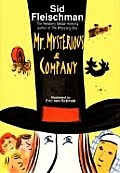 One day she handed me Mr. Mysterious & Company, Sid Fleischman’s first book for children. I didn’t want to seem ungrateful, so I sat down in one of the library’s comfy chairs and started to read while I waited for my dad to come and pick me up.
One day she handed me Mr. Mysterious & Company, Sid Fleischman’s first book for children. I didn’t want to seem ungrateful, so I sat down in one of the library’s comfy chairs and started to read while I waited for my dad to come and pick me up.
Simply put, that book had me at hello. Its combination of intriguing setting, quirky characters, and magic grabbed hold of me and wouldn’t let go. I loved it. I devoured the book. And as soon as I was done, I turned back to page 1 and read it again. And again. And again.
I checked that book out so many times that Mrs. Freeborn finally told me I could keep it. I still have it today. That’s the power of a great book, and a great librarian. Thank you, Mrs. Freeborn.
For me, the transformative book happened to be fiction. But for some kids, the magical book that opens the doors to a whole new world is nonfiction. How do I know? Because once in a while, I get a letter or email from an adult who tells me the tremendous impact one of my books has had on a child they know.
Like my well-worn copy of Mr. Mysterious & Company, I treasure those notes. They provide tangible evidence that the right book at the right moment can make all the difference. No one knows that better than librarians. That’s why we need them.
Blog: I.N.K.: Interesting Non fiction for Kids (Login to Add to MyJacketFlap)
JacketFlap tags: Melissa Stewart, Firsthand Research, Add a tag
To write nonfiction, you have to like research. I mean really like it a lot. You have to like it so much that sometimes it’s hard to know when to get the heck out of Dodge and move on to the next step in the process.
Some of the authors who contribute to this blog focus on history topics. And since they don’t have time machines, they spend hours scouring libraries and museums for primary source materials—letters, journals, and the like.
But I write about science, so I almost never have to spend time in musty old basements or get blurry-eyed looking through reel after reel of microfilm. Instead, I get to go outside and experience the natural world in all its glory. As far As I’m concerned, that’s the best part of my job!
I love doing firsthand research, especially when it takes me to exotic places like the African savanna or a coral reef or a tropical rain forest. Nothing beats observing animals in their natural environment. This kind of research provides key tidbits of information that are often missing from authoritative books and journal articles about wildlife and wild places.
Here’s an example. When I went to Costa Rica with my husband’s family, one of the animals on my wish list was a three-toed sloth. I was soooo jealous when my husband and brother-in-law spotted one while I was scouting out birds along the river.
 But my patience was rewarded, a few days later I saw one, well, actually two. My 7-year-old niece (shown here ), spotted a female sloth hanging upside-down with a tiny baby clinging to her. It was a wonderful sight, especially since I shared it with my niece. She was completely enthralled. But let’s be honest. So was I.
But my patience was rewarded, a few days later I saw one, well, actually two. My 7-year-old niece (shown here ), spotted a female sloth hanging upside-down with a tiny baby clinging to her. It was a wonderful sight, especially since I shared it with my niece. She was completely enthralled. But let’s be honest. So was I. 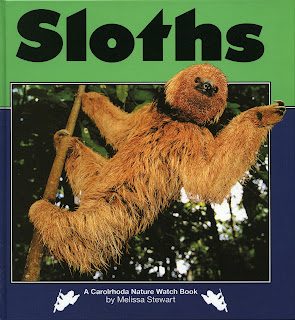 Deep in a Central American rain forest, spindly spider monkeys spend their days chattering as they leap from branch to branch. Above them, toucans call out to one another as they fly among the treetops. Far below, on the forest floor, butterflies flit among the leaf litter. The woodland is alive with sound and activity.
Deep in a Central American rain forest, spindly spider monkeys spend their days chattering as they leap from branch to branch. Above them, toucans call out to one another as they fly among the treetops. Far below, on the forest floor, butterflies flit among the leaf litter. The woodland is alive with sound and activity.But one rainforest animal remains silent and still. It is the sloth. All day and most of the night, this shaggy-coated creature hardly moves at all. It hangs upside down and does its best to blend in with its surroundings.
Honestly, when work is this much fun, who needs a vacation?
Blog: I.N.K.: Interesting Non fiction for Kids (Login to Add to MyJacketFlap)
JacketFlap tags: Melissa Stewart, Teaching Tips, INK Think Tank, Teaching Science Through Literature, Science in the Classroom, Add a tag
Let’s face it. Some elementary teachers don’t feel completely comfortable teaching science to their students.
Let’s face it. Many schools have scaled back on science education so they can devote more time to language arts and math, with the goal of improving student scores on assessment tests.
That means many elementary students are receiving limited science instruction, and that’s a shame. But there is a solution, a way to sneak science into your lesson plans. Teach science through literature.
Coupling inquiry-based science and language arts instruction allows educators to prepare students for the critical reading and open response portions of assessment tests without neglecting science education. It’s also a more comfortable approach for teachers who don’t feel adequately prepared to teach science concepts to their students.
I’ve talked about teaching science through literature before on this blog. Take a look here and here. Today I’m going to focus on a third technique for sneaking science into elementary classrooms. I call it Perfect Pairs—pairing fiction and nonfiction titles with a connection to the science topic you’d like to teach.
Different students enjoy different kinds of books and learn in different ways, so Perfect Pairs can be a great way to introduce and reinforce science concepts. Here’s a pair of books that is perfect for discussions of weather, habitats, or animal adaptations. One looks at how people sometimes react to rain and emphasizes cause and effect. The other shows young readers how a variety of animals behave during a rainstorm.  The Rain Came Down by David Shannon will brighten any dreary day. Rollicking text complimented by witty caricatures describes how a rainstorm sets off a chain reaction that catapults an entire neighborhood into a grumpy, quarreling uproar. But then, the rain stops. The air smells fresh and sweet and a rainbow appears. Suddenly, everyone’s mood improves. The neighbors help each other clean up the mess caused by the ruckus, and everyone goes about their daily business.
The Rain Came Down by David Shannon will brighten any dreary day. Rollicking text complimented by witty caricatures describes how a rainstorm sets off a chain reaction that catapults an entire neighborhood into a grumpy, quarreling uproar. But then, the rain stops. The air smells fresh and sweet and a rainbow appears. Suddenly, everyone’s mood improves. The neighbors help each other clean up the mess caused by the ruckus, and everyone goes about their daily business.  Using clear, simple language and gentle watercolor illustrations, When Rain Falls by Melissa Stewart offers young readers a lyrical look at how animals living in forests, fields, wetlands, and deserts behave during a rainstorm. The book is sure to tap into your students’ natural curiosity about the natural world.
Using clear, simple language and gentle watercolor illustrations, When Rain Falls by Melissa Stewart offers young readers a lyrical look at how animals living in forests, fields, wetlands, and deserts behave during a rainstorm. The book is sure to tap into your students’ natural curiosity about the natural world.
Discussion Questions
--Ask your students what the two books have in common. [They are about what happens when it rains.]
--How are they different? [One focuses on people living in a neighborhood. The other looks at animals living in a variety of natural habitats.]
--Discuss what makes one book fiction and one nonfiction.
Related Activities
Read students the following poem by Aileen Fisher:
How brave a ladybug must be.
Each drop of rain as big as she.
Can you imagine what you’d do,
if raindrops fell as big as you?
Ask students to write a story that answers the question in the poem.
Have your class to bring raingear to school and take them outside while it is raining. Ask students to use their five senses to observe the rain. They should consider these questions:
—How large are the drops?
—What sounds do the drops make?
—Does rain have a smell? (Rain can be polluted so children shouldn’t taste it.)
—How does rain feel?
—What happens to rain when it hits the pavement, the grass, or the school building?
Discuss the questions when you go back inside.
Do you know another great book that could be paired with the two I’ve discussed today? Can you think of other related activities for students? If so, please add a comment below. This blog is all about sharing ideas.
Blog: I.N.K.: Interesting Non fiction for Kids (Login to Add to MyJacketFlap)
JacketFlap tags: Vicki Cobb, Melissa Stewart, Deborah Heiligman, Rosalyn Schanzer, nonfiction news, Barbara Kerley, Add a tag
Vicki Cobb is speaking on Tuesday at the University of Kentucky School of Education. Her topic is "Science That's Fun to Read and Teach." Her audience is elemmentary education students as well as interested faculty and area teachers and librarians.
Rosalyn Schanzer will be talking about her book WHAT DARWIN SAW; THE JOURNEY THAT CHANGED THE WORLD at George Mason University’s enormous Fall for the Book festival in the Greater Washington D.C. area. It’s free and open to the public. Here’s the schedule and site information about her presentation:
What Darwin Saw: The Journey That Changed the World
Sunday, September 20 from 2 to 3 P.M.
Prince George’s Memorial Library
Hyattsville Branch
6530 Adelphi Rd.
Hyattsville, MD 20782
301-985-4690
You can find out more about the author by clicking here:
http://www.fallforthebook.org/participants-detail.php?participant_id=53
You can find out all about the book festival and see the entire speakers’ list by clicking here: http://www.fallforthebook.org/
From Barbara Kerley: I'll be co-teaching (with Highlights Sr. Editor Kim T. Griswell) a class in writing narrative nonfiction as part of the Highlights Foundation Founders Workshop Series. The class runs from Nov. 5 - 8. For more information, go to http://www.highlightsfoundation.org/pages/current/FWsched_nonfictionStorytelling.html
From Deborah Heiligman: Charles and Emma: The Darwins' Leap of Faith has been named to:Booklist's Top 10 Romances for Youth and Booklist's Top 10 Biographies for Youth
Melissa Stewart will be speaking at the New England Reading Association Conference in Warwick, RI, on September 25 and the New England Environmental Education Association Conference in Ivoryton, CT on September 27.
Booklist Webinar: The Scoop on Series Nonfiction: Best Uses, Best Practices, and Best New Books for Fall
September 22, 3PM-4pm cST
Need help engaging reluctant readers, promoting reading success, and keeping your library relevant in this era of accountability? Attend "The Scoop on Series Nonfiction" Webinar and come away with a wealth of information and ideas for enhancing your collection and engaging young readers with series nonfiction. Booklist youth editors will moderate as four top series nonfiction publishers—Lerner Publications, ABDO Publishing Company, Norwood House Press, and Cherry Lake Publishing—share their expertise and introduce a selection of their fall titles. Webinar participants will also get a sneak peek at Booklist's October 1 Series Nonfiction Spotlight, including a focus on a new trend: series nonfiction and early literacy. Reserve your seat today!
View Next 9 Posts





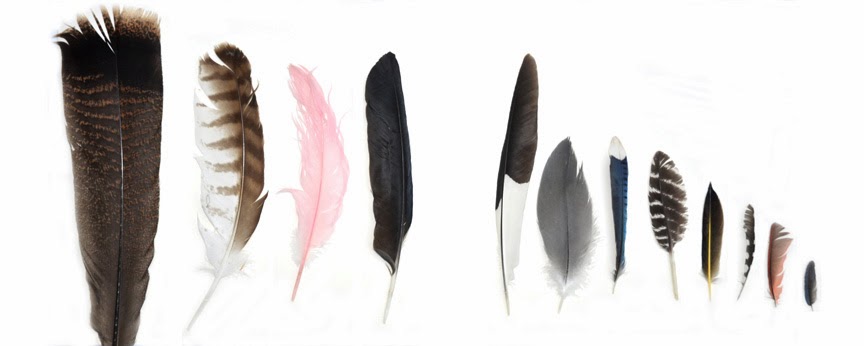




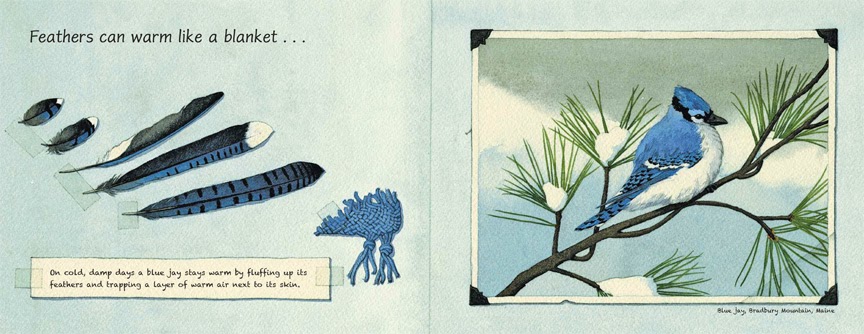
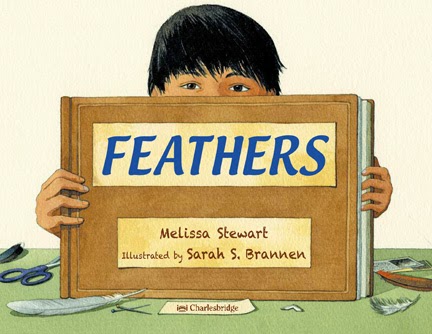
















Melissa,
This is a great post, and it gets to the heart, I think, of what we are all trying to do--and that is write books that mean so much to us we can't help but convey that to our readers. I love that you say you've been writing No Monkeys, No Chocolate (GREAT title!) since you were 8. What is the pub date?
Thanks, Deb. No Monkeys, No Chocolate is coming out in Fall 2013. I'm reviewing some of the final art now, which (finally) makes the book really seem alive to me.
This is a wonderful post. We teachers are trying to help children understand that it is an author's personal take on a topic that makes writing so original and compelling. Thank you for the inside scoop.
Great post, Melissa. But I think that good writers also look for a way to own a subject that has been suggested by an editor (in the interest of making a living.) Good writers don't like to be plugged into a series with a formula. Too much of this kind of writing stifles the spark in an author that connects a subject to a reader
I love this post, Melissa. Only after I finally "got" this did I really start feeling successful as a nonfiction writer, plus it makes writing a lot more interesting and fun! Now, this is where I always start with a new project, and it's what I go back to whenever I'm feeling stuck. So powerful and true!
Vicki, that's an interesting point. When I'm assigned a topic, I approach the book differently. The fun is putting the pieces together in a way that will be interesting and relevant to young readers.
The kind of writing I'm addressing in my post is different, at least for me. It's more about discovering that there is a puzzle and figuring out its attributes. What shape is it? Is it 2-D or 3-D or maybe even 4-D.